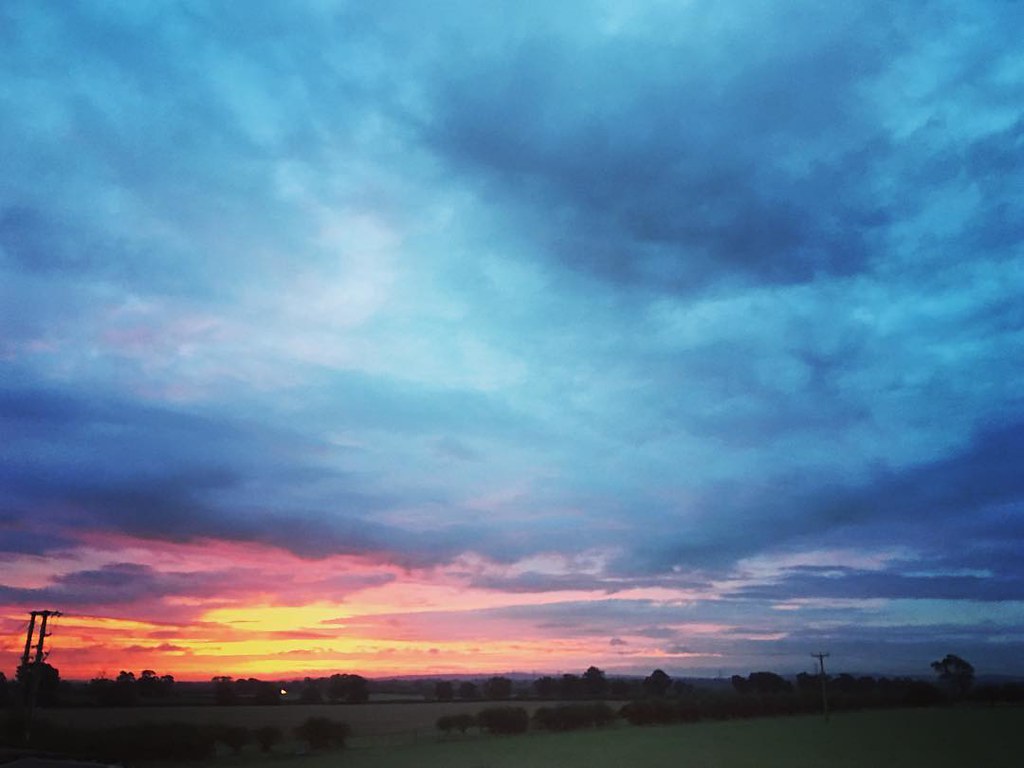anthony galvin
TAGGED: WORDS
Going back to running.

-
As a teenager I did a bit of running, school cross country and the odd local road race. But running wasn’t really a stand alone activity. It was part of other sports that I enjoyed. As an adult I’d run a 10k and 5k in the early 2000s. Without any real training or routine.
Fast forward to 2025. Post pandemic. Mostly remote working. Rural living and a winter sat by the fire or working at the kitchen table. 20 years on from my last organised running event it dawned on me that I had become sedentary. Dog walks aside I hardly moved from my desk some days.
In the past this would have meant a burst of cycling activity, but for a variety of reasons at the start of the year I’ve ended up between bikes.
So I’ve started running. Not far. Not fast. Not on Strava, though I’m logging my runs with my watch. Grabbing 40 mins in the middle of the day to get out and slowly plod along the local roads.
Initially just a few kilometres but building some more endurance. With the odd Park run thrown in as a check point of improvement. I’m late to the joys of Park Run - the community sprint and camarardare has become a welcome addition to my Saturday routine.
And then this weekend, a 10k through the streets of Oxford with over 5000 other runners, joggers and plodders. The sun was out, and so were the supporters. The time was slow. But that’s not really the point. At the start of the year I could hardly imagine running for a bus and on Sunday I ran for just over an hour without stopping. Onwards…
12/05/2025 permalink
Self-driving cars: moonshot or beer wagon?
Almost every day there’s some new buzz, hype and occasional factual statement about self driving cars. The intersection (pun intended) of technology, user experience and transport policy is an interesting place.
From a technology perspective it feels like autonomous vehicles could be the equivalent of the space race for our times. As a side effect of getting people on the moon, NASA is also credited with inventing everything from Nike Air to better dentistry. Whilst the self-driving car industry is still in its infancy, innovations in detailed mapping, artificial intelligence, motion detection, capacity planning, battery technology and machine learning (to name but a few) have already started to have a significant impact on the technology we use everyday.
But transport and mobility matter a lot more than as a way to get a more accurate vacuum cleaner. The relationship people have with cars is complicated. Much of what has been written about vehicle ownership, usage and urban planning doesn’t take into account the irrational choices that people make around transport everyday. How autonomous vehicles fit into real world scenarios is going to be complicated, and based on how politicians handle most rapid technology change, I’m not optimistic about how smoothly the polity will adapt.
In many ways the motor car has been one of the most liberating inventions of the past 150 years. If I was so inclined, tomorrow morning I could pile up the car and drive to the South of France (or more likely the west coast of Scotland) with a level of ease and freedom not possible 100 years or so ago. Yet, despite having a car I don’t really self identify as a driver. It’s something I do, but I’m more likely to say I’m a cyclist or walker. But I’m conscious for many people driving is a very important part of their identify, and for some people the self-driving car represents a challenge to the idea of what it means to be human.
As with most complex technology problems, it’s easier to get to grips with them if you start by trying to build your own version. A self-driving car is a bit of a leap, but the next step for the location aware drinks trolley I build last year is probably autonomy. Even if I don’t get as far as a universal product, a beer wagon that can navigate my office is probably a pretty good place to start.
2017-01-30 22:28:23 GMT permalink
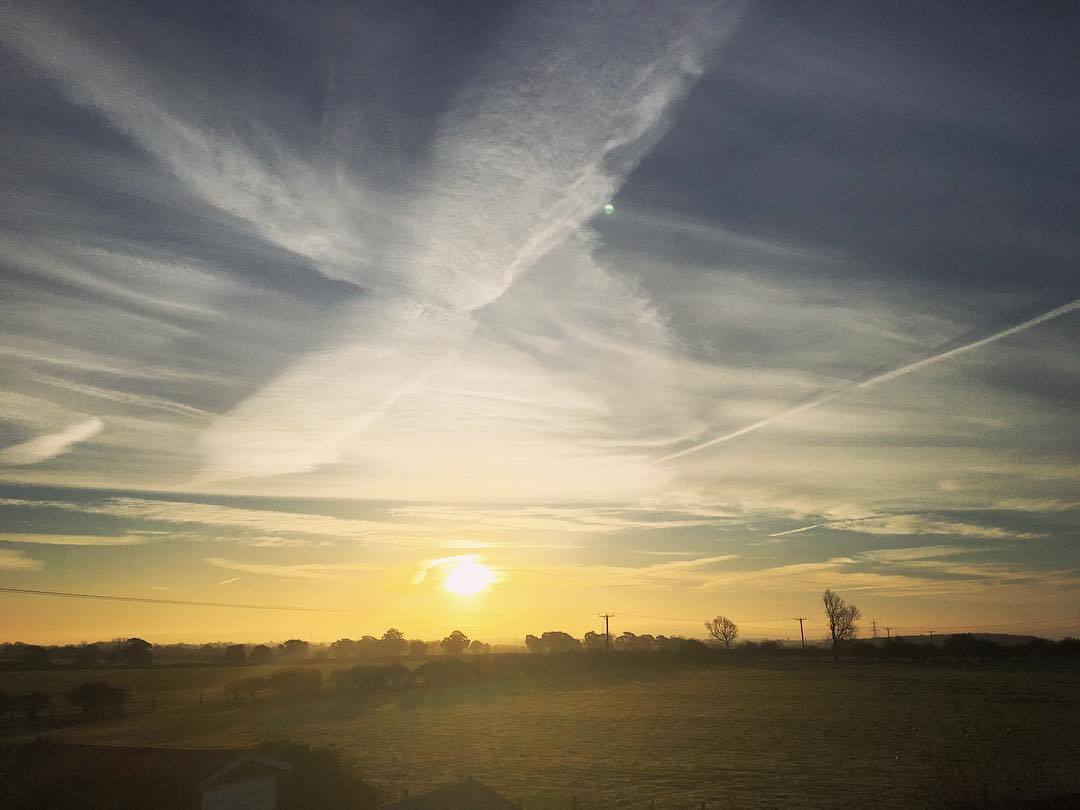
The view.
Over the last few years, the view over the fields behind our house has become increasingly important to me. The back fields.
It is in many ways an unremarkable view. Looking out across flat fields of pasture. A power line, a few hedges and trees. Sometimes there’s sheep but more often the fields are empty. In the distance, on a clear day, a glimpse of the Chiltern Hills. Mentmore, the Beacon at Ivinghoe and beyond. There’s certainly more dramatic views.
Sometimes there is a red kite or a green woodpecker. Today it was a pheasant. But more often it’s a small flock of starlings or sparrows that provide the avian entertainment. In the summer months there are swallows. There’s owls as well, but despite my best efforts I haven’t seen them, only heard their cries on the wind.
I’ve been collecting the sunrises over the fields. Which I suppose is also a way of collecting the sky. Big and open here in North Bucks. Soon the sky might be the only thing still visible to us if the plan to turn the fields into houses is approved.
I think of it as my view, though it’s not mine, I’m just an observer. An onlooker. Not a participant. The flocks of sparrows and starlings don’t object to planning applications, though I’m sure they would given the chance.
2017-01-15 00:31:58 GMT permalink
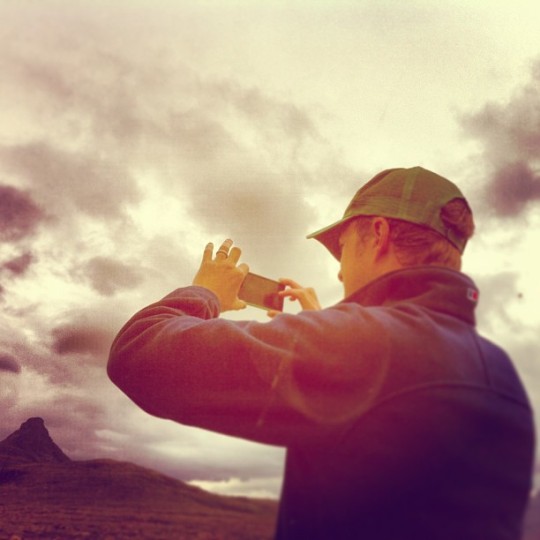
I’m away on holiday at the moment, which means for once I bought a Sunday paper (in this case The Observer). Jon Naughton’s column on the changing nature of photography (phones, snapchat etc..) caught my eye.
It’s an interesting piece in which he links digital behaviours to a demographic. I think this is a common mistake. It’s better to think about behaviours linked to a user need or the network effect of technology adoption. People of a certain age may have a common behaviour, but this is probably linked to a common activity. A classic example of this is the growth of video calling. This is often cross generational, due to parents / grand-parents ‘Skyping’ their children / grand-children.
Naughton quotes Chase Jarvis, “The best camera is the one you have with you”. The article did get me thinking about my relationship with photography. At home we have plenty of devices that take pictures. Our collection includes 1950’s SLRs inherited from my Grandfather, a 10 year old Nikon DSLR and ubiquitous iPhones.
Away on holiday, we’ve brought the DSLR and the smartphones. We use them in different ways at different times. Last night I was sat on the edge of the bay as the sun went down trying to bag a photo of an Otter (I failed). In this scenario, the Nikon is easily the best bet. Emma has also grabbed some great pictures of Buzzards that would be impossible on the iPhone. We’ve also got some great landscape shots with our phones. They are similar, but different tools that come into their own at different times. If you’re interested in photography it’s better to have a few different tools to hand.
The device itself also makes a difference to the subjects, not just the photographer. A week or so ago, when asked to take a few photos at a christening, I used the DSLR. Brandishing the big lens quickly got people lined up around the font. Our two children have no interest in taking photos with a phone, but get a camera out and they turn into Corinne Day.
The idea that new forms of communication through photography (such as Snapchat) are the first time that pictures have been used for communication seems odd. Photography has been more than just holiday snaps for almost 200 years. It’s the disposable nature of communication that is changing. People today rarely save text messages in the way they previously saved letters.
Many pictures are part of this disposable communication culture, but others, like our holiday snaps are some kind of record. For our family at least.
Photo by @emsygalvin
2016-08-23 21:03:58 GMT permalink
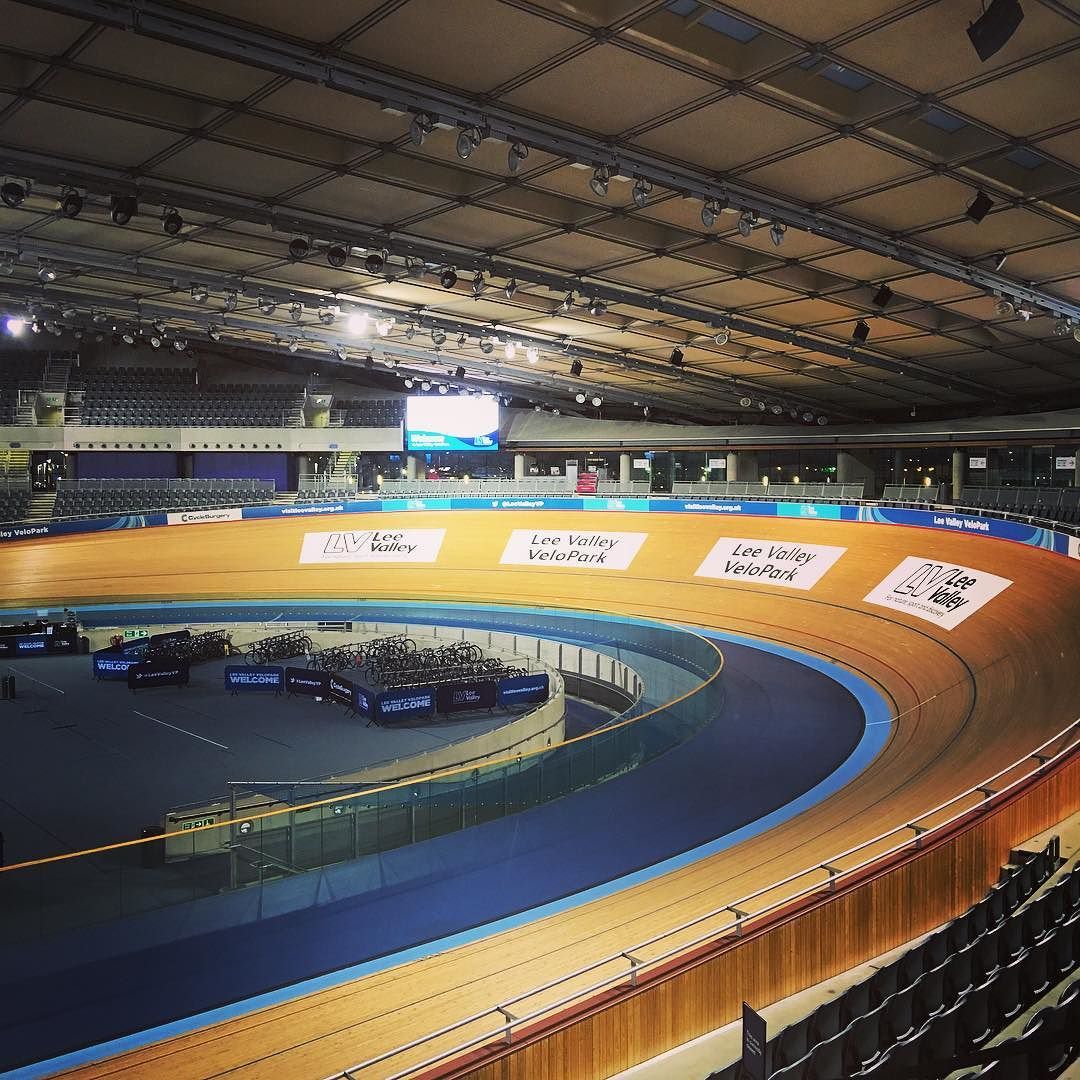
A night on the boards
I’ve ridden lots of different bikes, in lots of different places. But this is the first time I’ve ridden fixed gear. With no brakes. On a wooden track that slopes to over 40 degrees in the banking.
But this isn’t just any wooden track - this is the Olympic Velodrome. It’s immediately familiar. I’ve spent hours watching Hoy, Wiggins, Pendleton, Trott and many more speed round. Only a few days before my ride, the world championships were filling the place to the rafters.
It’s a different feel today. No crowd and instead of sitting in the gods cheering I’m stood in the middle of the track. Watching the big screen, waiting for my turn to record a flying lap time.
We’ve already had an hour or so of coaching. Learning how to move across the blue boards of the ‘Côte d'Azur’ and speed round the track. Taking just enough speed to hold an improbably high line near the top of the vertiginous banking. I adjust my seat again. In my mind channelling the great Eddy Merckx, though in reality it’s just nerves.
Then I’m off. Slowly at first. Building up speed so I can take the bend as high as possible and then swoop down to the start line. Legs pumping, gripping too tight to the bars.
Down over the line and into the first bend. I’m trying to hold the black line and ride the shortest distance. In my excitement and enthusiasm I’m way above the line. Up near the red, riding too far as I catapult into the back straight. Then round the final bend and I’m already facing the finish line, one last effort and I’m done. I’m breathing so hard that I’m not able to look up and see my time. I slow down and drift back into the middle of the track, as the next rider starts their charge.
My time is pretty terrible, but that’s ok. I’ve ridden the Olympic velodrome and I’ve got a few pointers about where I went wrong. I’ll be back to take some laps soon.
2016-03-22 13:49:36 GMT permalink
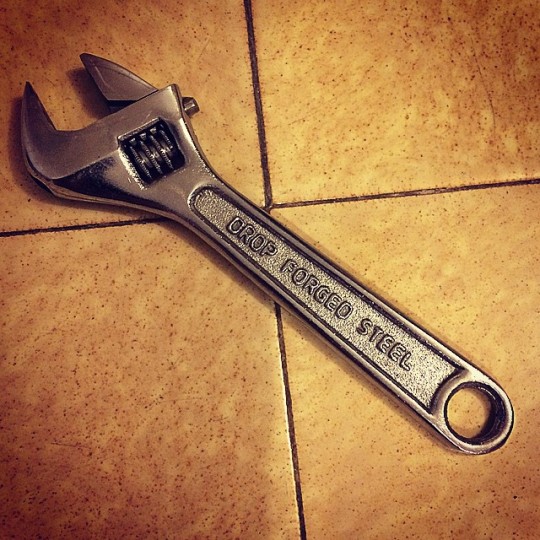
Tools are recursive.
Increasingly the conversations I’m having in the office are about tools - digital tools, scalable tools, technology as a tool. But these conversations quickly get meta. There are as many definitions of a digital tool as there are tools themselves. And many of these tools are really incremental pieces of technology, built on a whole heap of other tools and platforms.
As an example, some people in the office have been using Slack, a collaboration and communication tool that’s been getting some press (and dollars) recently. Slack uses, amongst other things, some Amazon AWS tools. Which are tools that we also use to build tools for our clients. And you can create and integrate other tools with Slack, allowing you to create tools to extend a tool that you use to help a team create tools.
Confused? You probably shouldn’t be. The fact that there are few new ideas and that we are building on the ideas / frameworks / shoulders of others is surely standard operating procedure in the current point of our post-sampler creative and cultural continuum.
But what’s important is not the just the originality of the 1% being added to the collective digital noise, but the story that you tell. The how, what and why matter as much as the code you write. Perhaps story points shouldn’t just be in the backlog.
2014-12-11 21:53:57 GMT permalink
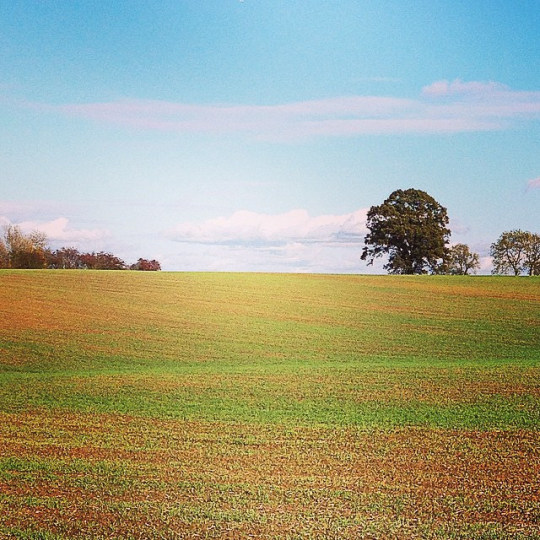
What is the countryside for.
It’s a question that’s increasingly discussed, often in light of factory farming, wind farms, fracking or the housing policy.
But it’s not just a directly economic asset. It’s also an escape route. After a genuinely difficult week for our family, we struck out on our usual short loop around the patchwork of fields and pathways that surround the village.
This isn’t picture postcard England. The sights on our circuit incorporate the village football pitches, a couple of light industrial units, a view of Milton Keynes in the distance, some former clay pits (“the bomb hole”) and on Saturday the joy of a red kite soaring over the fields and a clear light that shone some brightness back into our family life.
The countryside is ‘for’ lots of things - but not all of them are easily measured in pounds or acres.
2014-10-27 09:47:23 GMT permalink
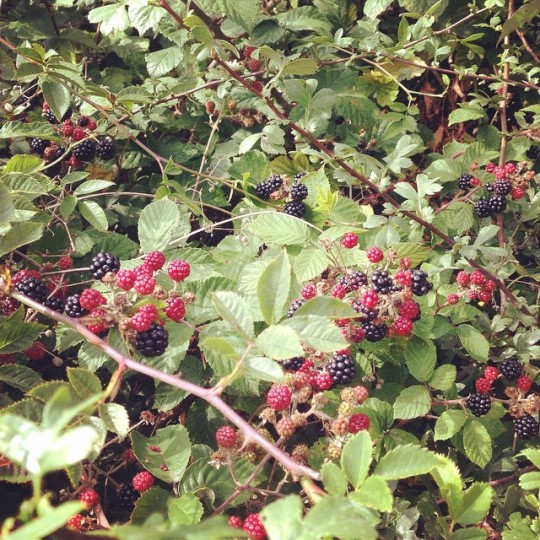
Marking change.
It’s that time of the year when you look up and realise that summer has all but slipped away. There is a mist over the fields in the morning, and although still mild the heat has gone out of the middle of the day. But it’s still just about summer. A ‘quarter season’. A liminal time.
There are a lot of small rituals and signs associated with the coming of autumn and I have my own list of minor indicators that provide a coda to another summer: the end of the cricket season, preparing my commuting bike for the damp mornings ahead and a family walk out along the edge of the village collecting blackberries (and sloes).
There’s been some bigger changes too over recent week: a new niece, a new start for Violet and maybe for Emma as well. Everything the same, constant change.
Inspired by the idea that temporal landmarks are important, it feels like these familial rituals need more space and emphasis. The sloes are already in the gin, waiting for another occasion to mark.
2014-09-14 10:55:58 GMT permalink
I wrote something about the Apple Keynote for the Wolff Olins blog.
2014-09-11 20:20:02 GMT permalink
Your API is your brand
Recently I was asked to take a look at an API as part of an advertising awards entry that we were making. As with most awards entries the assessment I was making wasn’t just about the functional elements such as the available methods, approach to content negotiation and compliance with open standards, but also the way the API was presented. Was there good documentation and tools as well as an active an easy to engage developer community.
All those elements were there, but there was something else less tangible and probably more important that I was really looking for. What did the API really say about the brand? This assessment is more subtle, but gets to the heart of how and why an organisation is choosing to expose services to third-parties.
- How does the sign-up process work
- Can I have a limited number of API calls without having to sign-up, so that I can test if this is for me
- Which programming languages are the code examples available in (the choice of languages can say a huge amount about the brand)
- How often is the API updated, is this a live project
- Is there an easy way to submit bugs or feature requests
- Which developer tools are being used to share code and examples (can I do a pull request on GitHub?)
The most important area to understand is the value that the API is offering to developers and third-parties, and by extension what is the expected return value the business can hope to receive.
Empowering developers though your API is a form of co-development with people you might not know so well. Choosing the playing field (the services) carefully is an important way of shaping the development direction.
There’s clearly an assumption within some organisations that “having an API” (public or private) is enough, but just showing up is no longer a winning strategy. The way companies engage the developer community is a pure expression of branding through doing (show, don’t tell). If done in the right way it empowers others to realise your brand expression through their own art, copy and code. Which seems like something that is worth investing in.
2014-06-18 10:23:00 GMT permalink










